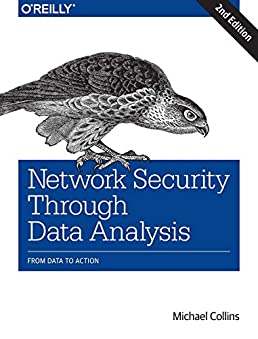
Price: $46.01
(as of Oct 04, 2022 16:55:23 UTC – Details)


From the Preface
Audience
The target audience for this book is network administrators and operational security analysts, the personnel who work on NOC floors or who face an IDS console on a regular basis. Information security analysis is a young discipline, and there really is no well-defined body of knowledge I can point to and say, “Know this.” This book is intended to provide a snapshot of analytic techniques that I or other people have thrown at the wall over the past 10 years and seen stick. My expectation is that you have some familiarity with TCP/IP tools such as netstat, tcpdump, and wireshark.
In addition, I expect that you have some familiarity with scripting languages. In this book, I use Python as my go-to language for combining tools. The Python code is illustrative and might be understandable without a Python background, but it is assumed that you possess the skills to create filters or other tools in the language of your choice.
In the course of writing this book, I have incorporated techniques from a number of different disciplines. Where possible, I’ve included references back to original sources so that you can look through that material and find other approaches. Many of these techniques involve mathematical or statistical reasoning that I have intentionally kept at a functional level rather than going through the derivations of the approach. A basic understanding of statistics will, however, be helpful.
Contents of This Book
This book is divided into three sections: Data, Tools, and Analytics. The Data section discusses the process of collecting and organizing data. The Tools section discusses a number of different tools to support analytical processes. The Analytics section discusses different analytic scenarios and techniques. Here’s a bit more detail on what you’ll find in each.
Part I discusses the collection, storage, and organization of data. Data storage and logistics are critical problems in security analysis; it’s easy to collect data, but hard to search through it and find actual phenomena. Data has a footprint, and it’s possible to collect so much data that you can never meaningfully search through it.
Part II discusses a number of different tools to use for analysis, visualization, and reporting. The tools described in this section are referenced extensively in the third section of the book when discussing how to conduct different analytics.
Part III introduces analysis proper, covering how to apply the tools discussed throughout the rest of the book to address various security tasks. The majority of this section is composed of chapters on various constructs (graphs, distance metrics) and security problems (DDoS, fumbling).
Publisher : O’Reilly Media; 2nd edition (October 17, 2017)
Language : English
Paperback : 428 pages
ISBN-10 : 1491962844
ISBN-13 : 978-1491962848
Item Weight : 1.64 pounds
Dimensions : 7.01 x 0.87 x 9.17 inches




